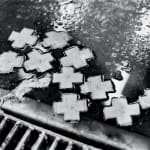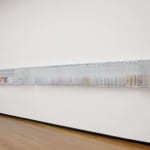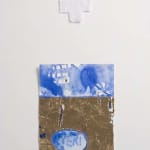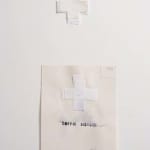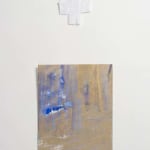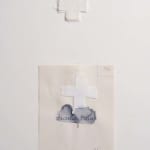Open a larger version of the following image in a popup:
![Karin Lambrecht, Pai [Father], 2008](data:image/gif;base64,R0lGODlhAQABAIAAAAAAAP///yH5BAEAAAAALAAAAAABAAEAAAIBRAA7) Installation view from Fundação Iberê Camargo of 'Pai [Father]'
Installation view from Fundação Iberê Camargo of 'Pai [Father]'
![Karin Lambrecht, Pai [Father], 2008](https://artlogic-res.cloudinary.com/w_1600,h_1600,c_limit,f_auto,fl_lossy,q_auto/artlogicstorage/cbprojects/images/view/9671865d1cf4bd421ab3beffd9124a75.jpg) Installation view from Fundação Iberê Camargo of 'Pai [Father]'
Installation view from Fundação Iberê Camargo of 'Pai [Father]'
Open a larger version of the following image in a popup:
![Karin Lambrecht, Pai [Father], 2008](data:image/gif;base64,R0lGODlhAQABAIAAAAAAAP///yH5BAEAAAAALAAAAAABAAEAAAIBRAA7) Individual plaque of 'Pai [Father]'
Individual plaque of 'Pai [Father]'
![Karin Lambrecht, Pai [Father], 2008](https://artlogic-res.cloudinary.com/w_1600,h_1600,c_limit,f_auto,fl_lossy,q_auto/artlogicstorage/cbprojects/images/view/40ee21b35a0db30836feb87fee0d0b8cj.jpg) Individual plaque of 'Pai [Father]'
Individual plaque of 'Pai [Father]'
Open a larger version of the following image in a popup:
![Karin Lambrecht, Pai [Father], 2008](data:image/gif;base64,R0lGODlhAQABAIAAAAAAAP///yH5BAEAAAAALAAAAAABAAEAAAIBRAA7) Individual plaque of 'Pai [Father]'
Individual plaque of 'Pai [Father]'
![Karin Lambrecht, Pai [Father], 2008](https://artlogic-res.cloudinary.com/w_1600,h_1600,c_limit,f_auto,fl_lossy,q_auto/artlogicstorage/cbprojects/images/view/20992eb369984f3fca3188019c2d123dj.jpg) Individual plaque of 'Pai [Father]'
Individual plaque of 'Pai [Father]'
Open a larger version of the following image in a popup:
![Karin Lambrecht, Pai [Father], 2008](data:image/gif;base64,R0lGODlhAQABAIAAAAAAAP///yH5BAEAAAAALAAAAAABAAEAAAIBRAA7) Individual plaque of 'Pai [Father]'
Individual plaque of 'Pai [Father]'
![Karin Lambrecht, Pai [Father], 2008](https://artlogic-res.cloudinary.com/w_1600,h_1600,c_limit,f_auto,fl_lossy,q_auto/artlogicstorage/cbprojects/images/view/0a6a1811277e8e7f4133ac3b3db16ac9j.jpg) Individual plaque of 'Pai [Father]'
Individual plaque of 'Pai [Father]'
Open a larger version of the following image in a popup:
![Karin Lambrecht, Pai [Father], 2008](data:image/gif;base64,R0lGODlhAQABAIAAAAAAAP///yH5BAEAAAAALAAAAAABAAEAAAIBRAA7) Individual plaque of 'Pai [Father]'
Individual plaque of 'Pai [Father]'
![Karin Lambrecht, Pai [Father], 2008](https://artlogic-res.cloudinary.com/w_1600,h_1600,c_limit,f_auto,fl_lossy,q_auto/artlogicstorage/cbprojects/images/view/fea67b9a2ad4d5256b1b49d72eb6cde0j.jpg) Individual plaque of 'Pai [Father]'
Individual plaque of 'Pai [Father]'
Karin Lambrecht Brazilian, b. 1957
Pai [Father], 2008
Photograph of small cotton crosses dipped in the blood of sheep at Deir El Asad, Israel. These crosses were later used as part of the work 'Pai [Father]' at the Fundação Iberê Camargo
Further images
'The pieces I’ve created so far by collecting blood from the slaughter of rams (or ewes), specifically in previously selected, always highly secluded and often very simple places, some of...
'The pieces I’ve created so far by collecting blood from the slaughter of rams (or ewes), specifically in previously selected, always highly secluded and often very simple places, some of which had no electricity, were never easy to make, because I needed the ranchers to trust me. When they carry out the slaughter, they need to be comfortable with my being present. I would never interfere with the methods of their trade. My work must be up to “ethical standards” in the eyes of the slaughterer so that I can be there with them. It’s a horrible moment. I know beforehand what I will see, the death of a lamb, the suffering of an animal as it gets killed with one stroke of the knife. I believe the artworks I show contain the memory of these facts; it’s a memory that’s invisible to the eye, but it’s there nonetheless. It’s equally contained in the piece Pai (Portuguese for father). I consider the blood stain a shadow of matter, something like a continuous tension of organic existence constantly generating a conflict between body and spirit.'
Interview conducted by Camila Gonzatto, for the Iberê Camargo Foundation
Interview conducted by Camila Gonzatto, for the Iberê Camargo Foundation
![Karin Lambrecht, Pai [Father], 2008](https://artlogic-res.cloudinary.com/w_1600,h_1600,c_limit,f_auto,fl_lossy,q_auto/artlogicstorage/cbprojects/images/view/355b9675ec7f360eba62702cb4ce76b5j.jpg)
